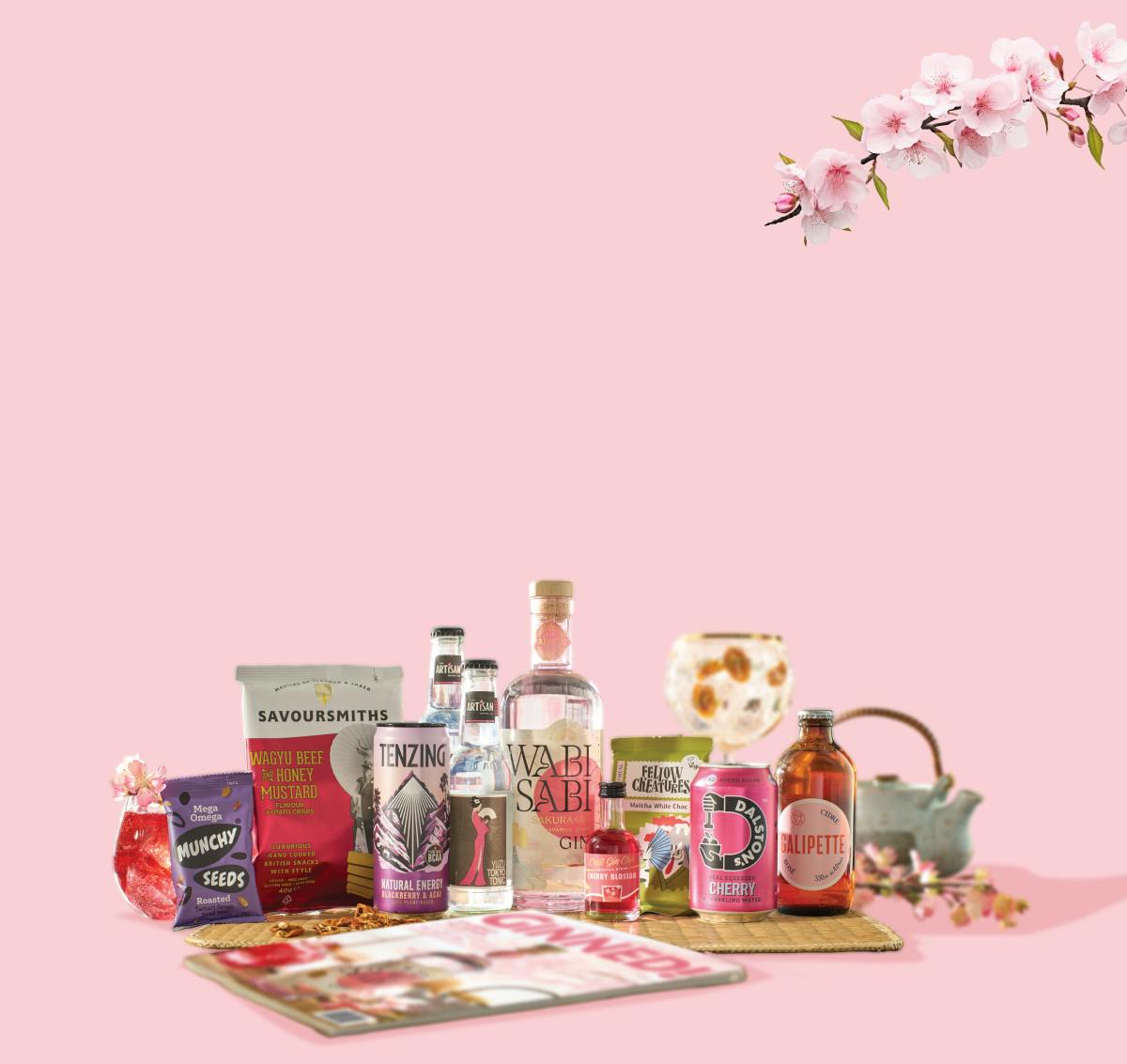Total flexibility, no commitment
A world of unique, crafted spirits
Easy, free and reliable delivery

Spirit of Science: the perfectly calibrated Elg Gin
A precise combination of just three botanicals, the gin in March's Gin of the Month box is a miracle of modern science. Meet Denmark’s Elg Gin.
Juniper, coriander seed and locally-grown carrot: these three botanicals, and these alone, are responsible for the fabulous flavour of March’s Gin of the Month.
Elg Gin is the invention of Henrik Elsner, a former biochemist and CEO whose retirement project – a winery-cum-distillery in the wilds of Denmark – has taken on a life of its own as Elg Gin’s popularity and renown has grown.
“My background is scientific,” he says. “That’s why the gin is based on the science of craft, and the craft of science.”
But how was this unusual gin, so complex in the glass despite its brief botanical list, born?
Activation Energy
After a career well spent as a biochemist, and then the CEO of a biotech company, Henrik Elsner was ready for a change.
The company he’d run had been sold, and he wanted to do something constructive with his retirement. He was looking to build an entirely new life. And, with decades of experience in the laboratory, he already had a skill that would lend itself to a new venture: distillation.
As Henrik says, “I’ve made a lot of small distillations in the lab – that’s part of being an organic chemist.”
Henrik and his wife, Lona, decided to pack up and move to Fredensborg, a beautiful lakeside spot just a short drive from the urban sprawl of Copenhagen.
“It’s such a wonderful, beautiful location down to the lake. It’s a very beautiful piece of Denmark,” Henrik says. He decided to name his new property Stone Grange, for the stones that littered the field of his new property. On it he built a winery, a distillery and a home, intending to spend his retirement making wine and brandy.
The wine, Henrik says, was their starting point. “We have a lot of stone in the field, which is why we can make good wine,” he explains. “The first thing we produced was brandy, which we based on our own wine production. Then we started doing Akvavit, but that’s very Scandinavian.”
As Henrik continued making distillations, he started thinking bigger. He wanted to make something that had worldwide appeal. With that in mind, he began experimenting with one botanical in particular: juniper, the cornerstone of gin. He liked his distillate so much that it was a natural choice to pursue the spirit that made such excellent use of juniper’s piney punch.
“My point was always to do something that tastes good, that smells good,” says Henrik. “Nothing fancy, but something that’s nice to drink and enjoy.”
He continues: “I actually found some old gin recipes from England, and it seems that when we go back 100 years, the amount of juniper was higher than it is today. Probably because of the bad alcohol – you needed more to cover it!”
Inspired by these recipes, Henrik started exploring the world of botanicals in search of the perfect, juniper-led gin.
Fundamental Particals
The way that Henrik works is different to many other craft distillers. Instead of putting all of his botanicals in his still – a beautiful copper still of German construction – Henrik distils each flavour separately. Then, at the end, he blends the flavours together to make Elg Gin No. 1.
To find the perfect combination of botanicals, Henrik started distilling everything he could get his hands on. After experimenting with many ingredients – even rhubarb was tried and rejected – just two flavours made the cut: coriander seed and carrot.
“I’ve distilled a lot of things, and one of them was carrot,” says Henrik of his more unusual botanical choice. “It tasted really good, and we use it to enhance the juniper.”
Henrik’s carrots are delivered fresh from a local farmer, and the distillation process is always the same: “We get the fresh carrot with the green top delivered to the distillery, and then cut it into small pieces and distil everything together – both the green top and the orange part of the carrot.”
As for the coriander seed, a classic gin botanical whose flavour blends perfectly with and enhances juniper, meticulous attention must be paid to timing. Henrik tastes each distillation to find his cut point; too early and the liquid will be bitter, too late and the taste of soap will take over. As he says, “It’s important to cut at the right time, because any part of the last bit will destroy the whole thing.”
Fortunately, the exceptionally high column of Henrik’s still allows him to be very precise when he’s cutting the liquid. And, thanks to the laboratory at the back of the distillery, Henrik has one more way to ensure that every single distillate is perfect.
“Everything we distil, I run a quality test,” he explains. Henrik takes every distillation to the lab and runs a test on how much of each flavour compound it contains; in other words, he can scientifically gauge how flavourful each liquid is. Once he’s sure every distillate is perfect, he blends them together in a secret ratio.
He says, “I love working this way, because we distil the juniper one way, and when we distil the coriander seed it’s another way. And the carrot, we can only distil between July and August – it has to be fresh, and that’s when we receive it.”
By distilling each botanical in precisely the method most suited for it, and then rigorously testing the results of each run, Henrik and his distillery assistant are able to produce bottle after bottle of spectacularly flavoured gin using just three simple botanicals. Beneath the powerful hum of juniper, incredible flavours blossom.
On the nose, the scents of black pepper and dried tangerine mingle with the fresh scent of coriander. On the palate, three flavours transform into more: tangerine, black pepper and lemongrass mingle and then dissipate into a creamy finish rich with herbaceous and earthy notes. And, at 47 percent, this elegant gin packs quite the punch.
Henrik says, “We first produced it with an alcohol strength of about 44 percent, but it was in a bar where it was cold during the night and became cloudy. Because of that, we had to raise the alcohol percentage to 47 percent.”
Despite its high ABV and simple botanical blend, Elg Gin No. 1 is a spirit with a complex palate and a creamy, smooth mouthfeel that works equally well in cocktails and a perfect serve.
“People are surprised when they hear that there are just three botanicals,” says Henrik. But that, he explains, was by design. He continues, “It was absolutely against the trend – many gins these days have a small amount of juniper and a lot of botanicals. So, we used just three.”
Henrik spent a year and a half perfecting his method, his technique and his blend – a painstaking process, but also a labour of love. His finished creation is bottled in an old pharmacy bottle, a call out both to the meticulous science that went into the development and distillation of the gin in March's Gin of the Month box, but also to his wife, Lona, who works as a professor at the University of Copenhagen.
Henrik says, “What surprised me most about making a gin was that it’s not easy – it’s rather complicated. Everybody can distil something, but to produce something that tastes good takes a long time. A lot of tasting, a lot of experimenting.”
He had perfected his first foray into the world of gin. But, blessed by insatiable curiosity, there was no way that Henrik would stop at one.
Free Radical
These days, Henrik boasts a range of four amazing gins. Each is numbered in the order in which it was developed. Elg Gin No. 1 is, of course, the original. For Elg Gin No. 2, Henrik turned to an earlier experiment for inspiration.
During the course of making his original gin, Henrik had experimented with leaving juniper in varying alcohol strengths to see what kind of extracts they would produce. “I found out that extract of juniper tastes really good,” he says, “and so we added some of it to our original gin. Elg Gin No. 2 was born!”
Elg Gin No. 3 is a classic Navy Strength Gin, distilled to a whopping 57 percent ABV. The higher alcohol content, Henrik explains, allows them to ramp up the amount of essential oils in the gin. This produces a fabulously flavourful liquid.
But it’s Elg Gin No. 4 that will really stand out on the gin shelf. Luminescent purple in the bottle, this fascinating gin has black carrots to thank for its incredible colour. Mix it with tonic and you’ll find a mysterious pink beverage in your glass.
Henrik says, “We macerate black carrots and put them into alcohol to make an extract. It’s a very tricky thing to do, because the red colour is not stable. It depends on alcohol strength, temperature, pH – and it tastes different, a drier taste. It has a little more carrot.”
These four gins aren’t the only spirits Henrik is experimenting with. He’s also developed his own absinthe, that beguiling green spirit with reputed hallucinogenic properties, and will be releasing his first batch of brandy this year. But that’s just the beginning for Henrik, who isn’t quite ready to leave the world of gin behind.
“My next project is to produce a tonic water,” he says. “I have a few recipes now – we’ll be releasing the first one this spring. But everything is small compared to the gin.”
And what a gin it is! For a man whose youth was filled with a lot of mediocre G&Ts – “Before I met my wife in 1977, I drank a lot of Gordon’s,” he laughs now – Henrik’s meticulous distillation and passion for spirits has very quickly taken him into the ranks of the world’s best Master Distillers.
But, even as Elg Gin No. 1 racks up awards and finds fans across the world, this scientist of spirits eschews the mad mixology of the world’s top bartenders. Instead, he prefers to drink his gin in citrusy cocktails like a Gin Fizz, or as a perfect G&T with a slice of lemon.
“What I like about Elg Gin as a G&T,” he says, “is that it gets a little cloudy, and it tastes a lot of juniper. It’s a G&T where gin sets the agenda, not the tonic.”
This meticulously distilled gin is truly a testament to Henrik’s skills in the mad science of distillation – and, with a dash of tonic and a slice of lemon, every gin lover’s dream.







